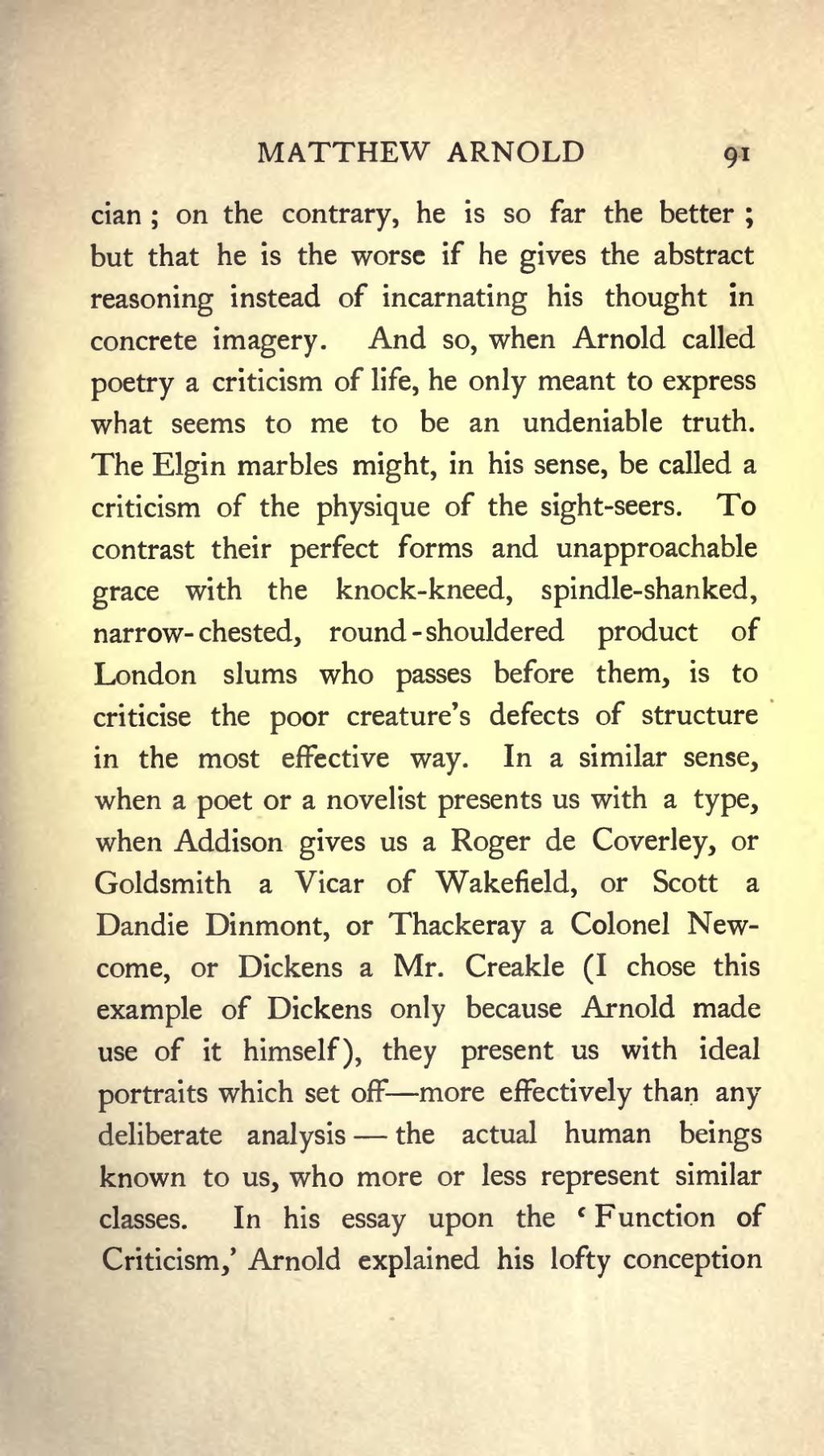cian; on the contrary, he is so far the better; but that he is the worse if he gives the abstract reasoning instead of incarnating his thought in concrete imagery. And so, when Arnold called poetry a criticism of life, he only meant to express what seems to me to be an undeniable truth. The Elgin marbles might, in his sense, be called a criticism of the physique of the sight-seers. To contrast their perfect forms and unapproachable grace with the knock-kneed, spindle-shanked, narrow-chested, round-shouldered product of London slums who passes before them, is to criticise the poor creature's defects of structure in the most effective way. In a similar sense, when a poet or a novelist presents us with a type, when Addison gives us a Roger de Coverley, or Goldsmith a Vicar of Wakefield, or Scott a Dandie Dinmont, or Thackeray a Colonel Newcome, or Dickens a Mr. Creakle (I chose this example of Dickens only because Arnold made use of it himself), they present us with ideal portraits which set off—more effectively than any deliberate analysis—the actual human beings known to us, who more or less represent similar classes. In his essay upon the 'Function of Criticism,' Arnold explained his lofty conception
